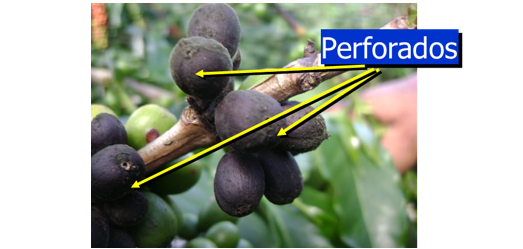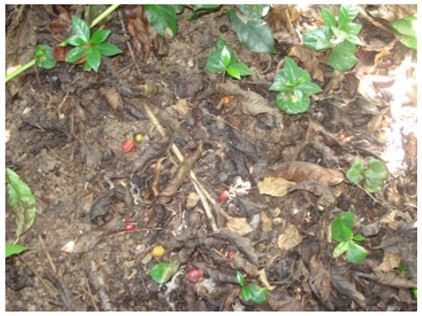- Antioquia, Caldas, Huila, Quindío, Risaralda, Tolima and Valle del Cauca are the departments reporting the highest incidence of CBB.
Bogotá, March 4, 2016 (FNC Press Office) – The Colombian Coffee Growers Federation (FNC) urged coffee producers to control the coffee berry borer (CBB) during El Niño, as the insect multiplies in dry seasons and harmfully impacts fruits and crops.
The fact that CBB survives up to 150 days in dry fruits is extremely problematic. Low rainfall in April and May will contribute to spreading the plague to first half’s harvest ripe fruits and second half’s harvest green fruits.

At wet mills, the FNC’s Extension Service found significant damage in harvested fruits, with Antioquia, Caldas, Huila, Quindío, Risaralda, Tolima and Valle del Cauca reporting the highest CBB incidence.
Prevention measures
Coffee growers must implement strict harvesting practices and collect all the fruits that remain in the trees. Post-harvesting lower-quality beans and byproducts must be “solarized” (placed in the sun on a tray or recipient and covered with plastic), a process that eradicates CBB’s different biological stages and prevents it from going back to plantations.

Fruits on the ground must also be picked up, as CBB in infected fruits can attack healthy fruits and in turn infest fruits to be harvested in second half.
Coffee growers must also implement “repase,” i.e. collect dry, ripe and overripe beans from trees and from the ground immediately after the main harvest ends and 2-3 weeks later. This practice is one of the most effective against CBB.

